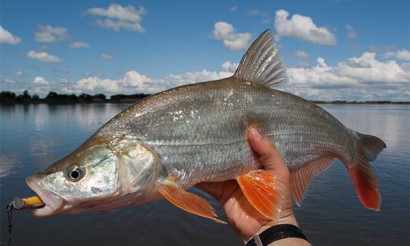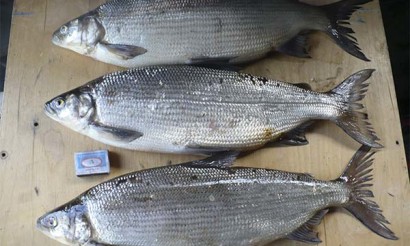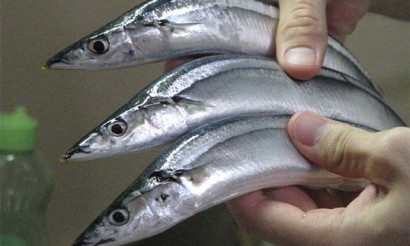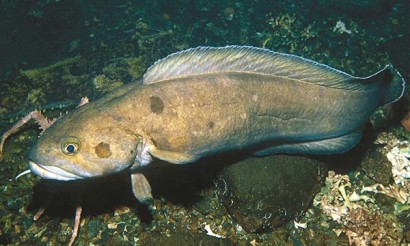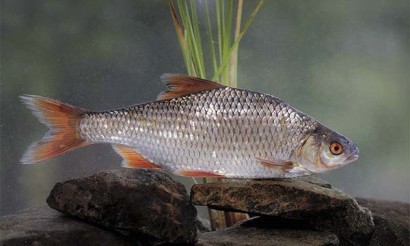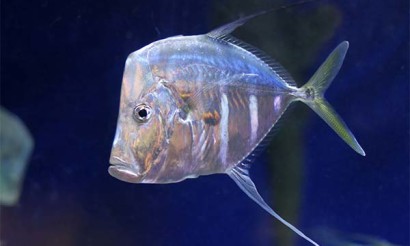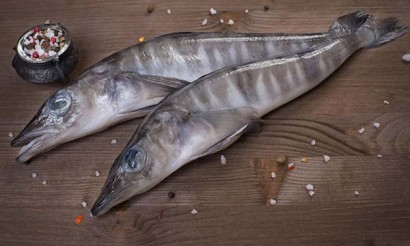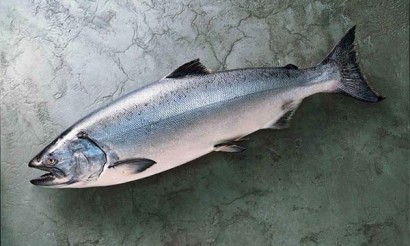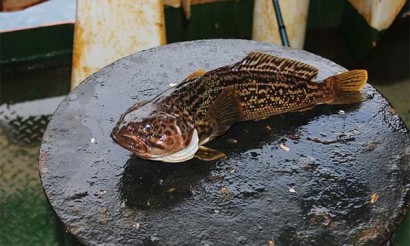Hoki fish: useful properties and recipes for cooking
Hoki fish is globally considered a delicacy. It lives exclusively in the waters of the sea. Many people argue about its benefits and harms to the human body, but still find common advantages - it is incredibly tasty and nutritious.
- Hoki: what kind of fish, how it looks and where it is found
- What it looks like
- Where does it live
- What it eats
- Types
- Composition and calories
- How useful is the meat of hoki fish
- General benefits
- For women
- For Men
- Pregnancy
- For breastfeeding
- For children
- The usefulness of hake fish for weight loss
- How useful is hawks caviar
- Hoki for diseases
- Harms and contraindications
- How to choose and store the fish
- How to cook fish: Recipes
- In the oven
- In the frying pan
- In a multicooker
- On the grill
- Hoki Fish Patties Recipes
- Japanese Fish Cakes
- Q&A
- Is hoki bony or not?
- Hoki: is it a fatty fish or not?
- What does fish taste like?
- What foods does it go with?
- Interesting Facts
Hoki has many nicknames, the most common of which are:
- grenadier fish;
- hoka fish;
- macrurus fish;
- macruronus;
- small-eyed long-tail;
- Argentine longtail;
- blue grenadier;
- blue hake;
- New Zealand whiptail;
- whiplash;
- whiplash hake;
- bahoos.
Hoki: what kind of fish, how it looks and where it is found
Hoki is a member of the moray family, a subspecies of codfish, and a close relative of hake. Despite the fact that it is a subspecies of cod, it has nothing to do with the cod itself. For some incredible reasons, this fish is not very popular in Russia, although it is very wrong. It is delicious and very useful for the human body.
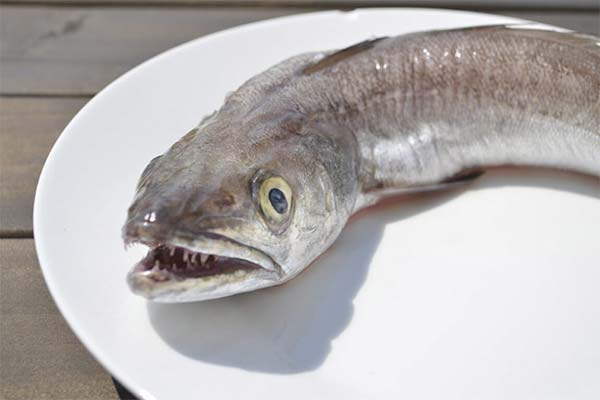
It did not get its own name for nothing, but due to the fact that it instantly begins to turn red after it is pulled out of the water. It is popularly called "red cod".
What does it look like?
Because of its body shape, it is nicknamed "giant tadpole." The length is impressive - at the expense of the tail, many know it as "rat-tail". This is a remarkable long fish, which has very fine frequent scales, some subspecies may even have small sharp spines. Its coloration is not conspicuous at all. Usually it has shades of gray and black in the water. There are also hoki with a more delicate coloration - light gray back and pinkish abdomen.
The head is slightly flattened on the sides. And there are large bulging eyes on its head. It has a rather unusual body structure. The upper jaw is larger and longer than the lower jaw. The teeth are arranged rather close to each other, resembling an ordinary brush, but, despite this, they are insanely sharp. Also note that the jaw consists of several rows of teeth. A small tendril can be found on the lower part of the hoki's jaw.
It is able to grow up to one and a half meters in length, and grows up to 30 kilograms in weight. The appearance and taste characteristics of hoki are similar to that of hake. Even by name, they are quite similar.
Where it lives
Hokies are most often found in Tasmania, New Zealand and off the coasts of South America. The main part that comes to Russia is caught in Argentina. Naturally, it arrives on Russian store shelves already cut and frozen.
It lives on the bottom or at depths of up to 1 kilometer, but when young, it spends most of its time on the water's surface. Where exactly this fish is caught, you can enjoy its fresh appearance and taste. According to numerous reports, the hoki lives for fifty years.
What does it eat?
Since this fish is a predator, it feeds on its own relatives - fish and crustaceans. It is due to its sharp and frequent teeth that it is able to disintegrate any food. Despite this, the main part of its diet is herring fish. It has a sharp eye, so it quickly and easily finds its prey.
Types
Hoki fish is also called - grenadier, rat tail or rattlesnake. Varieties of this representative of marine life, there are about 300 species. Some live exclusively in warm waters, and some prefer a more temperate climate. Their coloration depends on where they live, but one thing remains the same - they take on a red hue when extracted from the water.
Composition and calories
The fish consists of micronutrients such as:
- Iodine.The high content of iodine helps to improve the thyroid gland. Also, this trace element helps in accelerating the metabolism and various chemical reactions occurring in the body. By normalizing iodine in the human body, the functionality of the brain is increased.
- Phosphorus. The presence of phosphorus helps to maintain the natural beauty that is so necessary for the weaker sex. Also, this trace element is necessary for the elderly and young children, because it helps to strengthen bones, hair and teeth.
- Iron. The large amount of iron in the composition helps to cope with the development of anemia. Blood composition improves noticeably with regular consumption of hoki.
- Amino acids are absorbed faster through fish. If you don't eat fish, you can only get them through supplements and medications.
- Calcium. Calcium ions are necessary for the human body to excrete insulin and also to normalize the alkaline-acid balance in various tissues. We should not forget about calcium itself, which is beneficial for the development and strengthening of teeth, bones and hair at any age.
- Manganese. Allows you to speed up metabolic functions in the human body. It also allows cells to repair, grow, and divide faster.
- Fatty acids and vitamin F are also used to improve metabolic processes. These substances are able to enter the human body only through the consumption of fish. There are enough of these substances in choki, to maintain their normal amount it is necessary to consume it at least once a week.
- Due to the large number of different vitamins of group A, B, D, E, included in the composition of hoki, you can forget about the deficiency of a particular component in the body forever.
- Potassium. This trace element maintains water-salt balance throughout the body. Its large amount in choki helps in matters of the cardiovascular system.
- Fluoride. With the regular consumption of fish, you can forget about problems related to teeth, bones and hair forever.
- Selenium. This trace element is necessary for the proper functioning of the human body. It helps to speed up the metabolism, support the thyroid gland and many other functions.
- Magnesium. The high content of magnesium in hoki helps improve heart and nerve cell function. It can only be taken into the body with food. Magnesium is especially scarce in people who like to drink alcohol.
- Cobalt is necessary for the human body no less than all these vitamins and trace elements. It is vital in the development of the pancreas.
- Chromium is involved in the absorption of all the above vitamins, trace elements and amino acids. Thus, choki not only has a large composition of vitamins, but also allows the body to absorb all the health benefits hidden in it.
The caloric value of choki in 100 grams: 17 grams of protein, 0.6 grams of fat, 81 grams of moisture and 0.3 grams of omega-3.
The caloric value of the dish depends on how it is cooked:
- in raw form - 60 kcal;
- Boiled - 58,7 kcal;
- baked - 78 calories;
- fried - 148 kcal.
Low fat and high protein content contributes to the use of this fish as a sports nutrition.
How is the meat of hoki fish useful?
This small fish tastes tender, juicy and slightly sweet. The flavor is given to it by the amount of fat, which distinguishes it from various white fish species. In just 100 grams of this fish contains the daily norm of chromium and two daily norms of cobalt. Also, do not forget the amino acids - lysine, arginine and leucine.
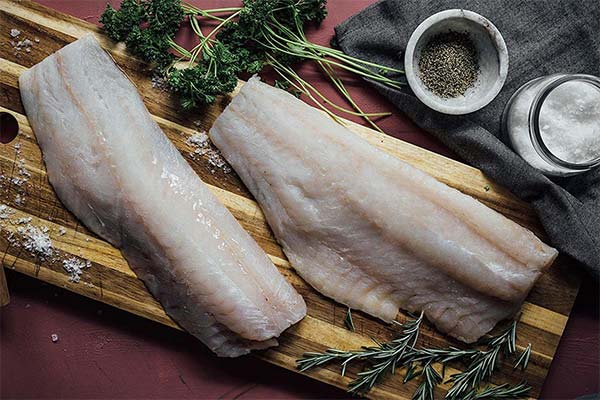
General benefits
Hoki has a large number of vitamins of all groups. As well as useful trace elements such as: iodine, potassium, phosphorus and many other types. The high content of iodine positively contributes to a variety of human functions. With regular consumption of hoki, you can notice improvement in the endocrine and digestive systems, strengthening the cardiovascular system and immunity. It also helps with the need to lower blood sugar, strengthen bones and eliminate toxins.
For women
Hoki contains vitamin A and some B vitamins that help slow down the aging process.
For men
This type of fish is quite useful for consumption, especially for men. Due to its composition, it is able to have a beneficial effect on the performance of the heart, reducing all kinds of inflammatory processes. The large amount of protein contained in the choki allows you to maintain male strength.
When pregnant
The high content of phosphorus and calcium is beneficial to the body of a pregnant woman. Also, do not forget about the large amount of vitamins included in the composition of choki. Doctors recommend consuming this fish to pregnant women 2 times a week by 200 grams. The main reason for doctors' recommendations to use this fish is the high content of omega-3 (fish oil). That is what contributes to the normal development of the baby in utero. Insufficient amount of this element can lead to mental retardation and fetal anemia. In some cases, and possible visual impairment.
A high content of digestible protein prevents the destruction of bones, teeth and muscles. Accordingly, a woman does not have to worry about her own appearance and internal appearance. Hoki is not a heavy food for digestion and therefore digestive problems can be avoided.
When breastfeeding
It should be noted that during the lactation period, the mother of the baby needs to eat a large amount of vitamins, trace elements and amino acids. This is what this fish is able to give. When eating hoki fish, you can get an invaluable amount of a variety of useful substances.
It should be taken into account that after the use of this product is necessary to monitor the reaction of the baby, if anything is suspicious - you must immediately contact the doctor. It is best in this period to use this type of fish in boiled, stewed or baked form. Smoked, raw and fried fish should be excluded from the diet of a nursing mother, because every body reacts to this fish individually.
For children
The absence of small bones in this fish has a beneficial effect on its consumption by children. Moreover, the large number of vitamins contained in it will help to strengthen the child's body. Thanks to the huge content of calcium and phosphorus in the composition of this fish, the developing bones of children will be stronger. Doctors recommend starting the first dietary supplement of this fish from the age of 11 months.
The benefits of khoki fish for weight loss
The caloric value of the fillet of hoki allows you to use this product as a dietary product. Despite its given qualities, it is fully capable of replacing meat, thanks to its full composition. This diet fish is able to restore the fat balance of the human body, as well as help speed up the metabolism. Fish can be eaten without fear of gaining weight. It will also be useful for diabetics. Nutritionists often advise eating choki because of its composition. For weight loss, it is advisable to bake this fish in the oven under foil. Thus, it is able even without adding oil and spices to satisfy all kinds of desires of the body and satisfy the hunger.
Why is hawkeye caviar useful?
Khoki caviar is very difficult to find, since in Russia it comes already cut up. It can be purchased only in the form of canned food. Despite this, hake caviar similar in appearance and taste to salmon roe. If you happen to buy fresh fish with caviar inside, it is very easy to prepare: you need to add 60 grams of salt and 25 grams of sugar to the caviar, mix and let stand for half a day in a cold room in a closed container.
Caviar is useful because it contains a huge amount of omega-3, as in all fish, in principle. Hoki liver and caviar have an increased nutritional value, thanks to them the body is adapted to a rapid recovery. It can be not only salted, but also stewed, baked and fried.
Hoki in diseases
This fish is very useful for thyroid diseases due to the large amount of iodine in its composition. It is also necessary to consume this fish for anemia, as it contains a large amount of iron. Because of the large number of vitamins, amino acids and trace elements, it helps to prevent the development of malignant tumors.
Harms and contraindications
The meat of hoki fish does not cause harm at all. The fish almost does not cause allergies. The only thing to consider is that it is not recommended for people with intolerance to seafood.
This unique fish is not able to accumulate in itself heavy metals. Its meat is clean, as hoki is not fed with any additives and antibiotics.
You should not consume red cod more than 2-3 times a week, otherwise the body will receive an excessive amount of protein. If you have kidney problems you should also be careful with this fish.
How to choose and store fish
This fish has the ability to tolerate a variety of thermal treatments. The amount of vitamins in it is absolutely not affected by heating and freezing. For this reason it can be purchased in absolutely any form, including frozen. On the shelves you can see it only cut or in the form of the carcass without head and scales. When choosing a choki it is necessary to take into account the amount of ice on it, which should not be more than a millimeter of transparent color. If there is a different color or more ice, consider the fact that it is likely to be over-frozen, and such should not be purchased. If properly defrosted and stored, it can resemble shrimp meat.
When buying fish, ask the seller the date it was introduced and the date it was caught. Khoki fishing seasons are March through April and August through September. It is important to inspect the carcass for freshness and quality. Don't forget to sniff the fish; it should not exude extraneous odors. Hoki should not be purchased where they cannot provide certificates for it. The carcass should be white or with a pink hue.
Frozen fish can be stored in the freezer for no more than 60 days. After defrosting, the fish must be cooked for 4 hours, otherwise it will not taste good and may even go bad.
How to cook hoki fish: recipes
This fish is very simple and versatile in cooking. It remains tender and juicy in any form, but it is especially good in baked form.
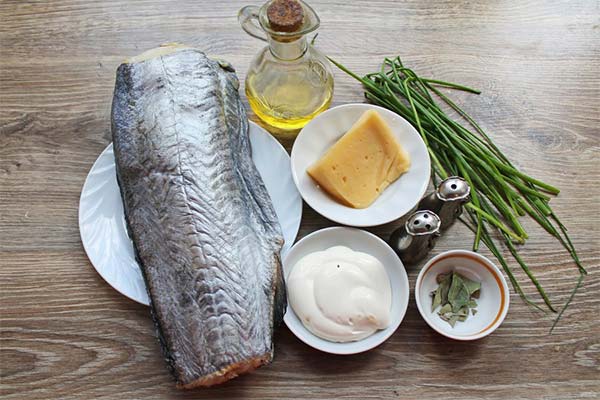
Before cooking it must be properly defrosted. Due to the great wateriness of hoki, it is not recommended to defrost in water or in a microwave, or it will turn into an unaesthetic mush when cooked. Defrosting should occur naturally. First you need to move the fish from the freezer to the refrigerator, on the lowest shelf. Once it is almost defrosted in the refrigerator, you can take it out and finally defrost it at room temperature. You should peel the fish from the scales carefully, as it is very small, but also very sharp. Do not braise khoki, as it does not like a long heat or heat treatment. It is better to fry it at high temperatures, otherwise it will start to spread in a pan.
An important point to keep in mind! Dishes cooked from the choki must be eaten immediately and in hot form. This fish has a peculiarity that when cooled, its taste and appearance becomes rubbery.
In the oven
You will need:
- 500 grams of Khoki;
- 50 grams of onions;
- 70 grams of mayonnaise;
- 70 grams of your favorite cheese;
- 20 grams of green onions;
- Salt, pepper to your personal taste;
- 1 tablespoon of any vegetable oil.
Preparation:
- Throw the mayonnaise in a bowl, add chopped green onions and grated cheese.
- The fish should be thawed and cut in half to remove the backbone and bones. Cut into portions.
- Salt and pepper the fish to taste.
- Oil the baking dish where you want to bake the khoki.
- Cut onions into small rings and put them all over the dish.
- Place the fish on top of the onions.
- Place the sauce on top of the fish, spreading it evenly over the whole surface.
- Cover the form with foil and bake for half an hour in a preheated oven to 180 degrees.
In a pan.
You will need:
- Hoki meat - 400 grams;
- Oat flakes - half a cup;
- Flour - 4 tablespoons;
- Egg - 1 piece;
- Curry seasoning - 1 teaspoon;
- Vegetable oil (to taste) - for frying;
- Salt and favorite spices - to taste.
Preparation:
- Grind oat flakes.
- In a separate bowl mix flour, spices, curry and salt.
- Cut hokey meat into portions.
- In turn, dip each piece of fish in flour, egg and flakes.
- Heat a frying pan and pour in vegetable oil.
- Fry on a low heat until golden brown.
In a multicooker
You will need:
- 1 kilogram of fish;
- 1 large head of onion;
- 2 carrots;
- Favorite seasonings;
- Ground black pepper;
- Lemon juice;
- Vegetable oil;
- 3 tablespoons of sour cream.
Preparation:
- Clean the fish, clean the insides.
- Cut off head and tail.
- Wash under running water and blot dry with paper towels.
- Cut into portions.
- Salt and pepper the fish, season with your favorite spices and add the juice of one lemon.
- Stir everything and leave to marinate for half an hour.
- The head and tail are not needed in the preparation, you can use them to make a rich soup.
- Peel the onions and cut them into small rings.
- Peel carrots, wash and grate them on a coarse grater.
- Vegetables can be marinated with the fish, but this is up to your personal preference.
- Grease the bottom of the multicooker with oil.
- At the bottom place the onion chopped into rings.
- On top of the onions evenly lay grated carrots.
- Arrange the chunks of choki on top.
- Season with a little salt, if necessary.
- Lay the rest of the onions and carrots on top of the fish.
- Add a little water.
- Pour on sour cream and spread it out evenly.
- It is necessary to select the mode "Baking" and cook for 50 minutes - one hour.
- After the elapsed time, you can serve the fish.
On the grill
Need (for 4 people):
- 4 hoki steaks;
- half a lemon;
- Salt, pepper - to taste;
- 1 tablespoon vegetable oil (olive oil is best).
Preparation:
- Steaks are well washed and dried with paper towel.
- Salt and pepper the fish, brush with oil and lemon juice.
- Cover the fish with cling film and leave to marinate for 20 minutes.
- Grease the grill grate with oil.
- The fire must be strong.
- Before placing the choki on the grill, oil it again. This will give it a nice crust, and it will remain juicy and tender inside.
- The fish should be kept over the fire for no more than 2-2,5 minutes on each side.
- After that, you can safely serve the dish to the table.
Hoki fish cutlets: recipes
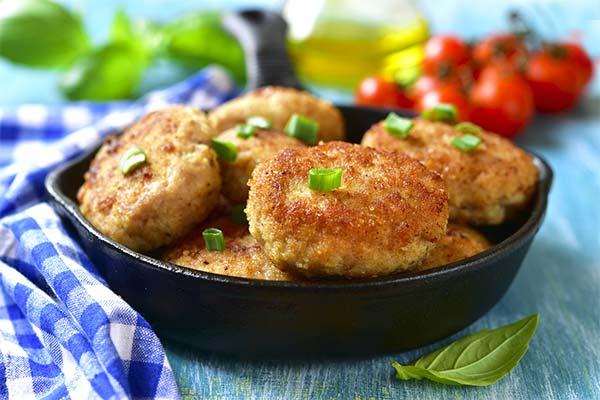
You will need:
- Khoki - 1 kilogram;
- Onions - 3 pieces;
- Chicken egg - 2 pieces;
- Cow's milk - 1 cup;
- 3 slices of bread;
- Salt, pepper, spices - to taste;
- Vegetable oil - for frying.
Preparation:
- Pour the milk into a bowl.
- Add pieces of bread to milk so that they completely absorb the liquid.
- Grind in a meat grinder: fish meat, onion and bread soaked in milk. Let the mince stand for about half an hour.
- Heat oil in a frying pan.
- Shape cutlets and fry over low heat until both sides are cooked through.
- After all the cutlets are cooked, you can serve them with your favorite side dish.
Japanese fish cutlets
You will need:
- 500 grams of hoki;
- 30 grams of corn flour;
- 4 pieces of chicken eggs;
- 15 ml white wine;
- 1.5 teaspoons sugar;
- Vegetable oil for frying;
- Salt, pepper, spices - to taste.
Preparation:
- Grind fish through a meat grinder.
- Let stand for a while and pour out the formed water.
- Add flour, egg yolks, spices and wine.
- Mix well until smooth.
- Whisk the egg whites with the sugar.
- Add whipped egg whites to the filling and mix gently until tender.
- Heat a frying pan on the stove.
- Add oil.
- Spoon the batter into the hot oil and fry on both sides until crispy.
- Such cutlets are great for breakfast or a light lunch.
Q&A
Is hoki bony or not?
Hoki has a large backbone, and has almost no small bones. For this reason, hoki can be given to children without fear, or to make incredibly tasty and tender cutlets.
Hoki: is it an oily fish or not?
It is not too fatty. The fish consists of 14-27% protein and 0.3-36% fat. The amount of protein and fat depends on its habitat, age and the diet of the fish itself.
What does the fish taste like?
Hoki meat is white and insanely delicious. When properly cooked, its meat is quite reminiscent of the taste of cod. Due to the fact that the meat of the fish is not too fatty, its cooking can be used in haute cuisine.
With what products is combined?
Almost all products are combined with this fish. It is especially good with potatoes and tomatoes. Hoki will give a unique taste such foods as spinach, artichokes and any green vegetables. Herbs can also be used absolutely any, such as mint and parsley. Lemon and orange add an unusual flavor to the hoki.
Interesting facts
- Although this fish belongs to the codfish, it has no relevance to the cod itself. It does not resemble it at all either by its behavior or its appearance.
- Behind its head the hoki has a dark spot characterizing it, thanks to which it is impossible to confuse it with other similar fish.
- The coloration of the choki changes instantly after it has been taken out of the water. This is not even affected by the species of fish, because they all at least a little, but redden after the catch.
- This fish is quite valued in various countries. Dishes prepared on its basis are considered a delicacy.
«Important: all information on this site is provided for informational purposes only. purposes. Before applying any recommendations, consult a health care professional. specialist. Neither the editors nor the authors are liable for any possible harm caused by materials."

